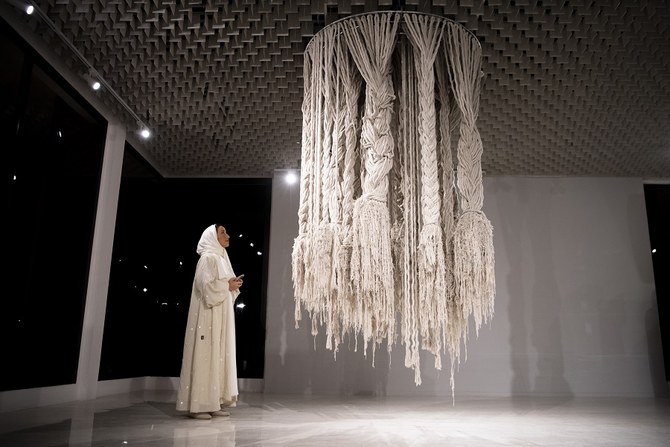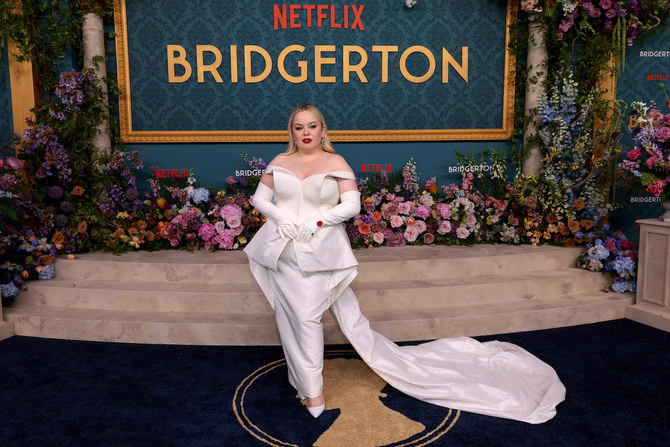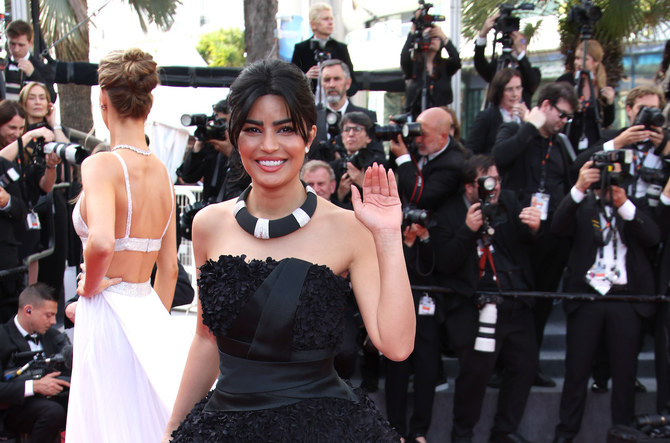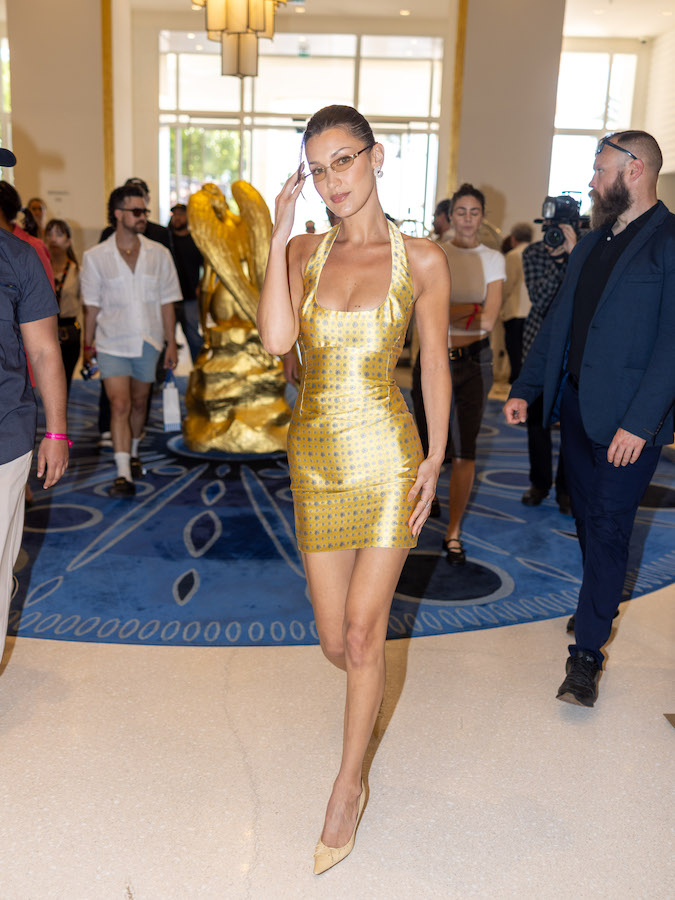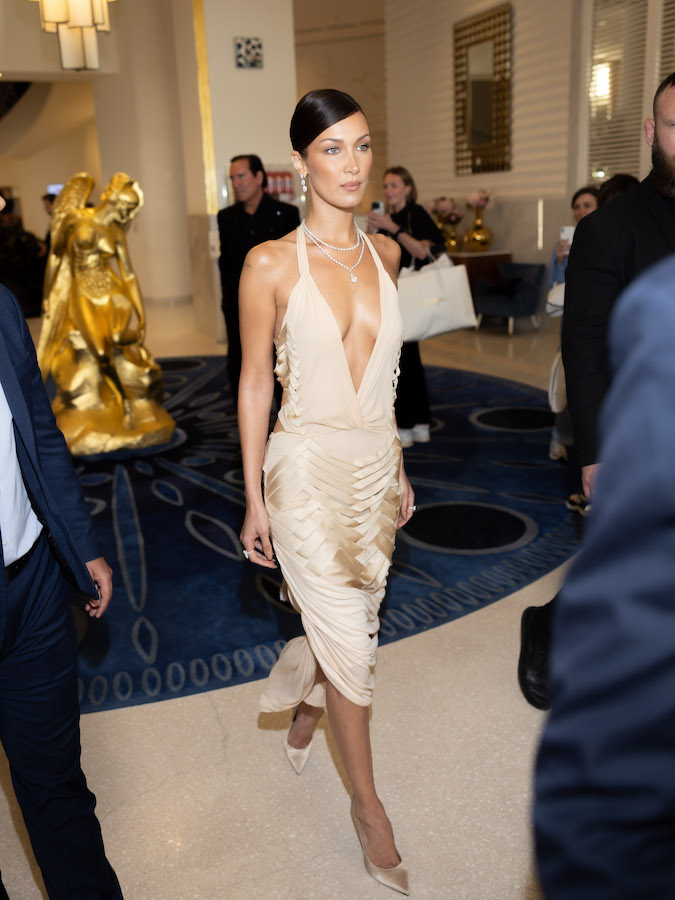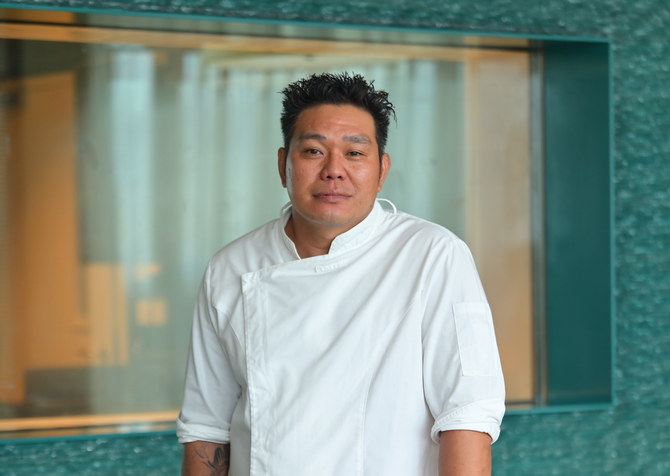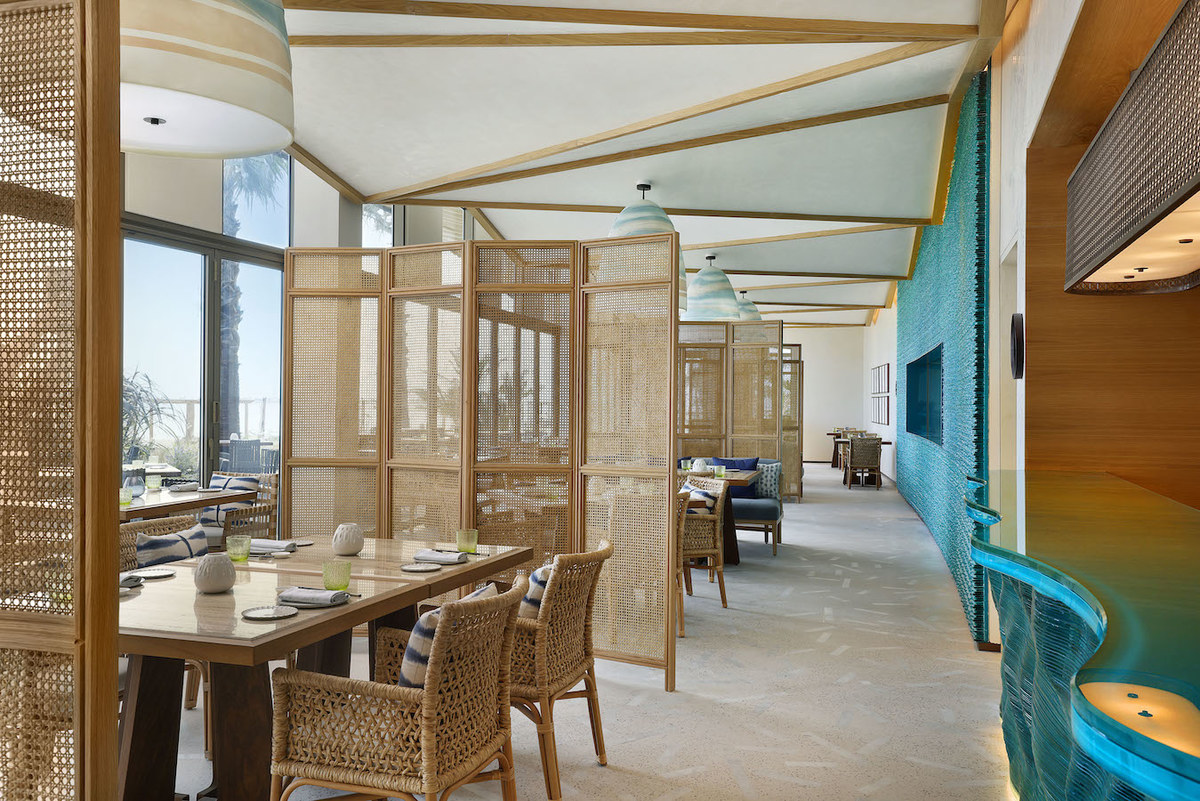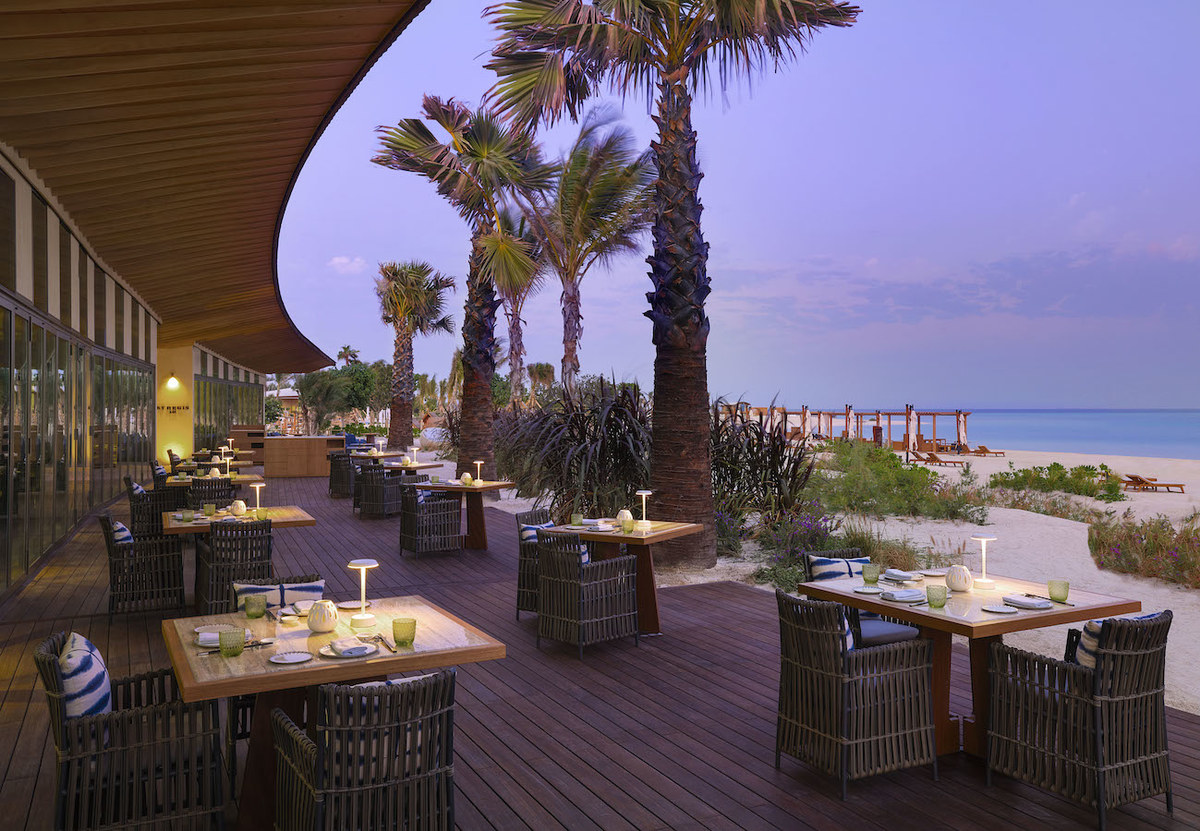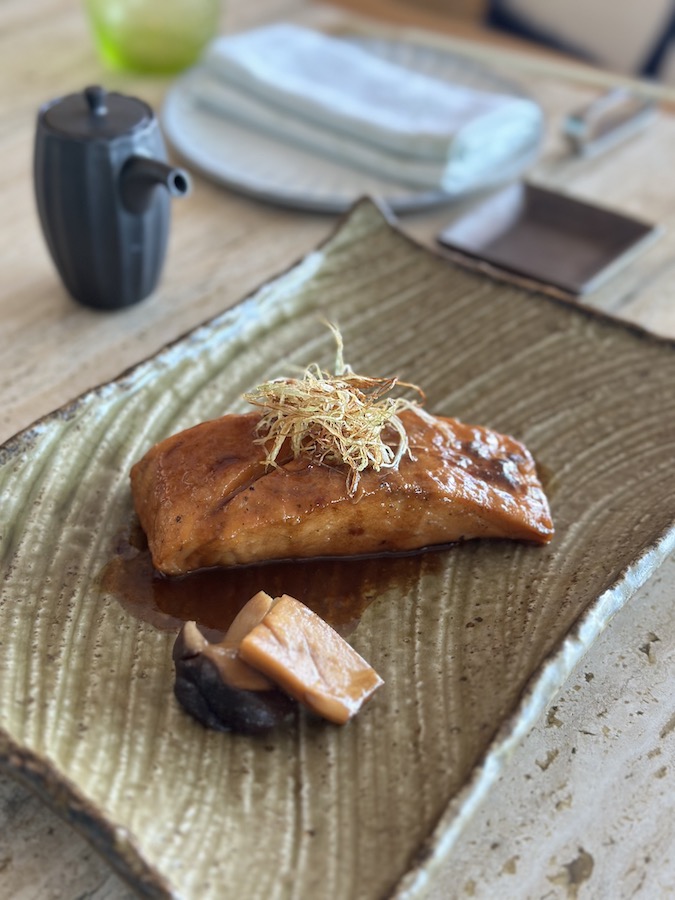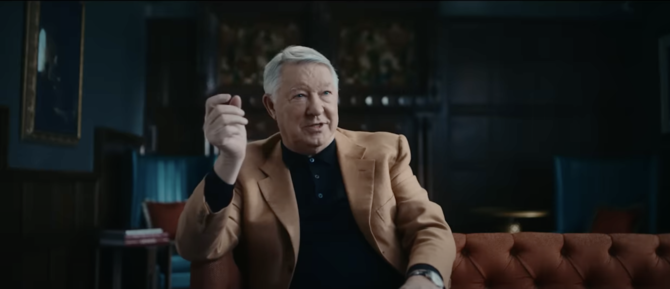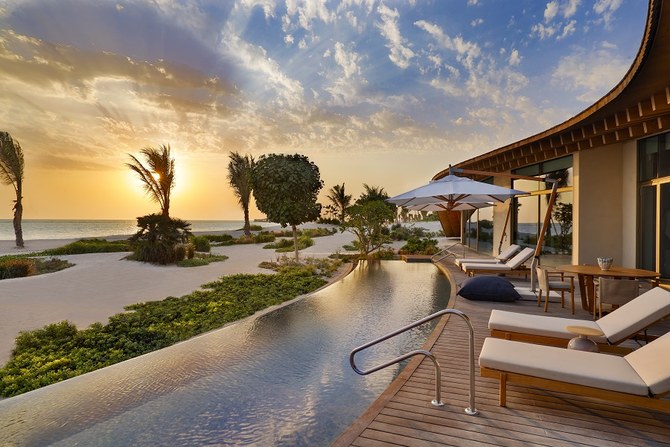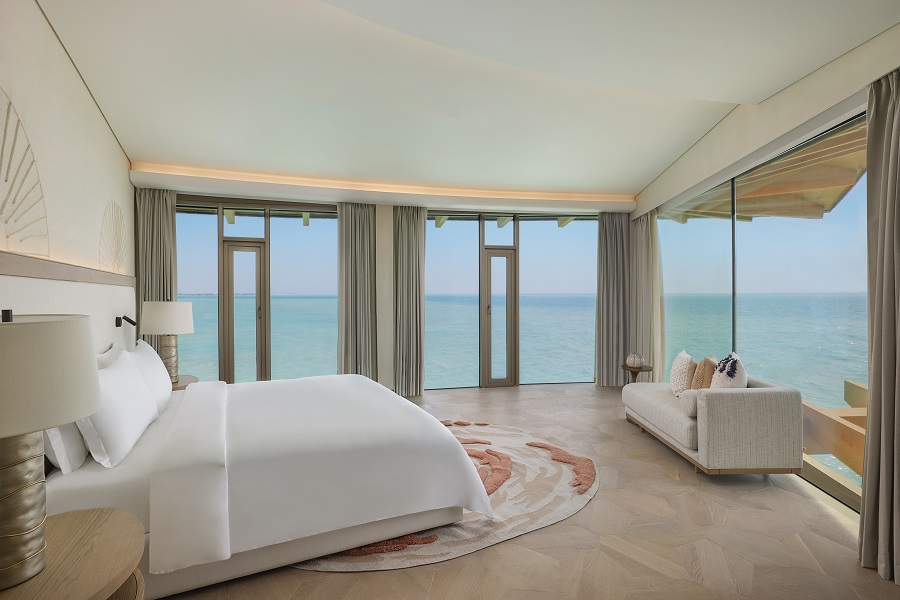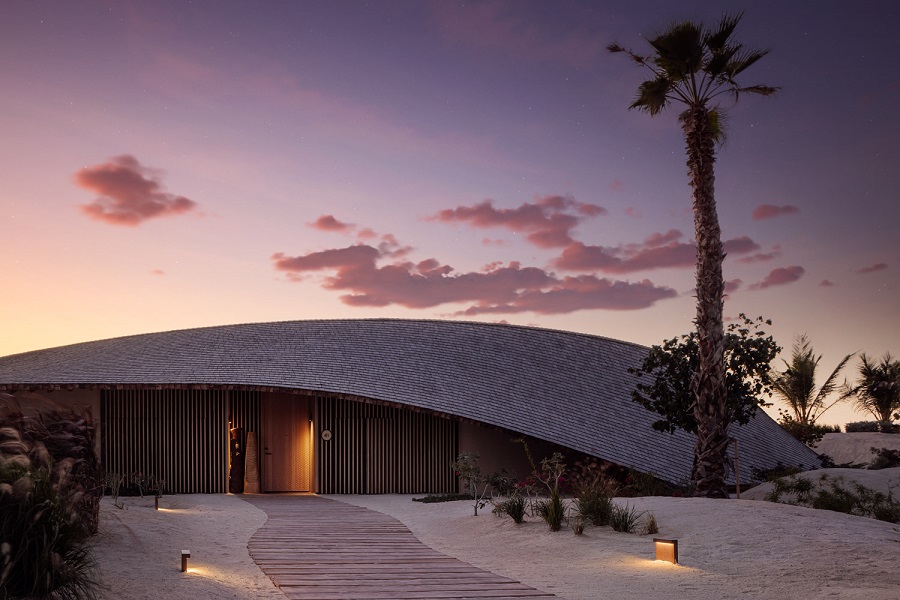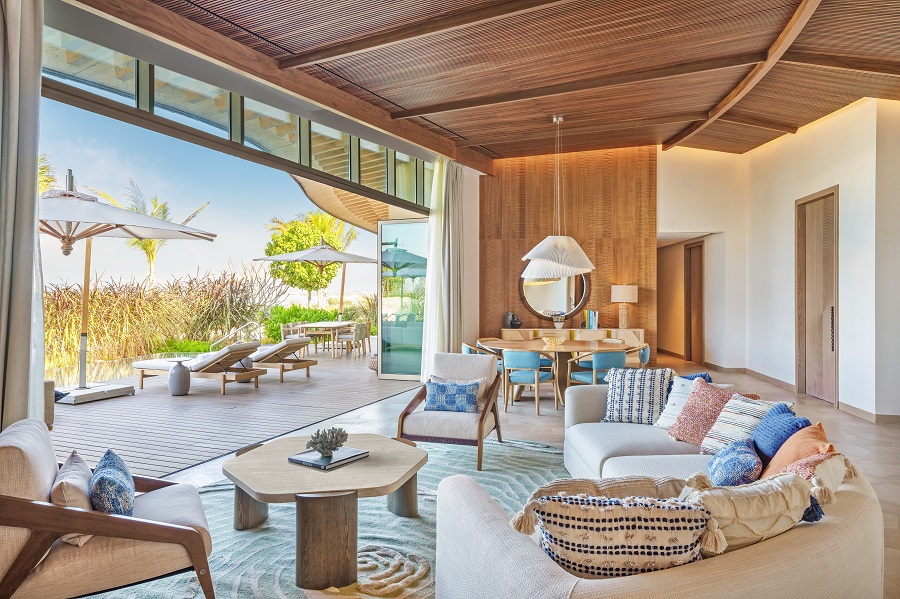RIYADH: Inside Riyadh’s Prince Faisal bin Fahd Arts Hall, multimedia artworks are displayed across the venue’s two floors on the theme of Takween, which means “form” in Arabic, and its relation to one’s identity.
As part of Misk Art Week’s fifth outing, taking place until Dec. 5, artists from Saudi Arabia, the Gulf, North Africa and the wider international community present art that questions identity — specifically how an individual’s social, historical and cultural origins influence their past, present and future.
From video works produced with AI to paintings, textile-based art and installations, the art on show aims, according to the Misk Art Institute, to offer a “critical platform for the creative community,” fostering cultural dialogue and intellectual exchange.
As visitors enter the hall, they are confronted by two dark figures by Saudi artist Filwa Nazer, made of black polyethylene industrial netting and titled The Other is Another Body (2021). The figures seem to guard the vibrantly colored wool-weave tapestry work hanging on a wall between them, titled Palm (1985), by American artist Sheila Hicks.
The works are part of Here, Now, the third in a series of the Misk Art Institute’s annual flagship exhibition, curated this time by British writer and curator Sacha Craddock alongside Misk’s assistant curators, Nora Algosaibi and Alia Ahmad Al-Saud.
The show, which features a mix of emerging and established artists and runs until Jan. 30, 2022, is the first in the Saudi capital to present works by both Saudi and international artists, including ones by well-known Saudi artists such as Manal Al-Dowayan’s abstract black and white work, I am Here (2016), Ayman Yossri Daydban’s Tree House (2019), and Sami Ali AlHossein’s colorful abstract figurative works on canvas. There is also a painting by renowned Sudanese painter Salah Elmur titled The Angry Singer (2015) and delicate floral drawings by Korean artist Young In Hong dating to 2009.
While without an overarching narrative, the show prompts the spectator to question, like the exhibition’s title, “why here and why now?” It encourages the visitor to reflect on the artworks and the nature of identity in a reflective, personal and subjective manner.
Upstairs is Under Construction, an exhibition of Misk Art Grant recipients who hail this year from Saudi Arabia, the UAE, Bahrain, Kuwait and Algeria. The grant funds up to SR1 million ($266,632) and has been distributed among the nine participating artists and collectives.
Basma Al-Shathry, lead curator at Misk Art Institute, said: “This year’s Misk Art Grant exhibition, ‘Under Construction,’ explores how identity is perceived as an emblem of growth, continuity and endless iterations of cultural representation throughout history. It has been a delight to bring together artists and designers from both the Middle East and North Africa to address the theme as a process of development, repetition, distortion and incompleteness in a time of synthesis, understanding and promise for the future.”
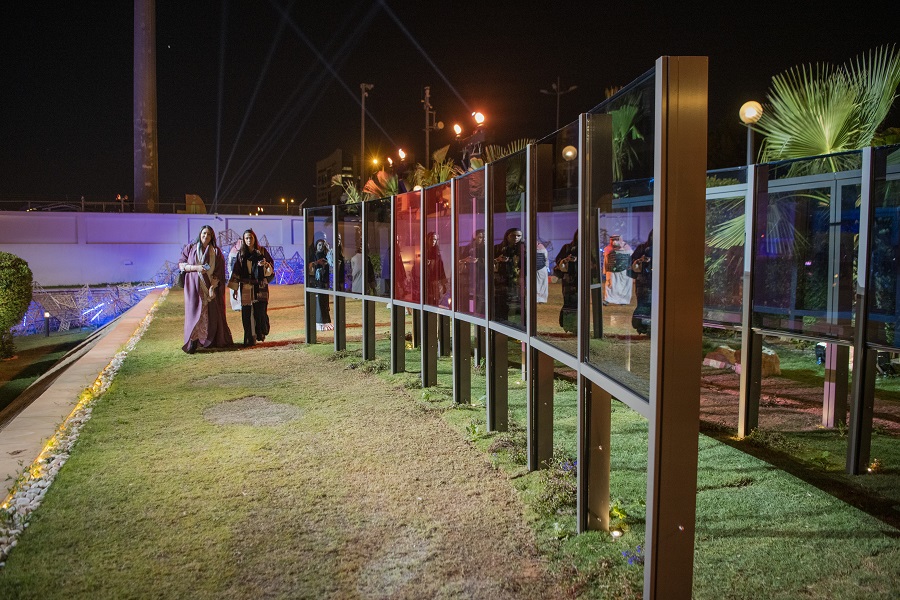
Mira AlMazrooei and Jawaher AlMutairi’s “Glass Libary” (2021). Part of the Misk Art Grant exhibition titled “Under construction” at Misk Art Week 2021. (Omar Al-Tamimi)
The works on show also respond to the theme of identity while focusing on how identity can be perceived as a method for growth and renewal, as well as social and historical continuity, via the incorporation of cultural representations throughout history.
One of the most poignant works is by Emirati artist and designer Latifa Saeed’s Sand Room (2021), which presents an assembly of sand-encased glass panels in the form of a cube that one can enter to observe the desert sand sediments that she collected from construction sites around Dubai.
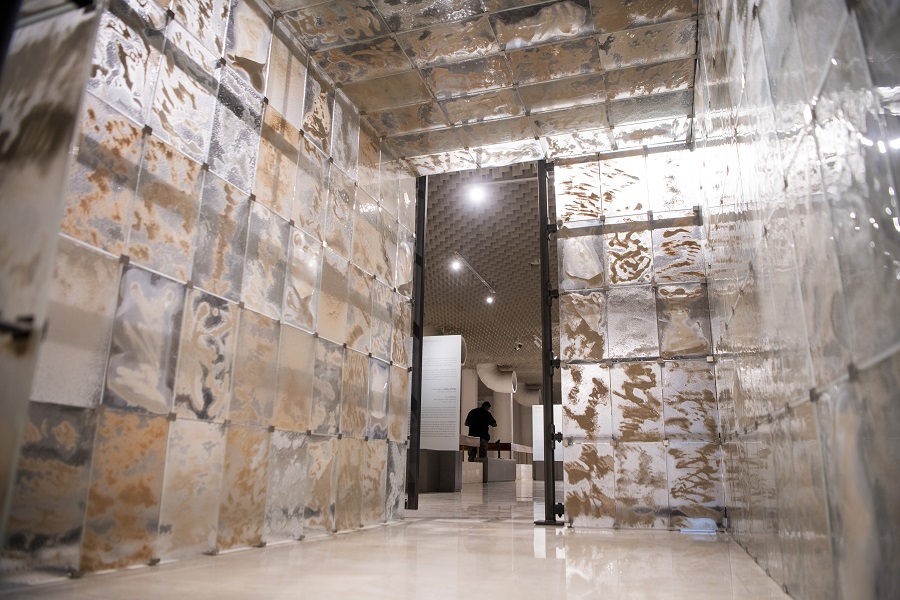
Latifa Saeed’s “Sand room” (2021). Part of the Misk Art Grant exhibition titled “Under Construction” at Misk Art Week 2021. (Omar Al-Tamimi)
“My research and work is always about transformation, whether it be of a city or of one’s mentality,” Saeed told Arab News. “I began by building an archive of sand from Dubai because the sites from where I collected the sand we cannot visit anymore because they are now construction sites.
Saeed visited development sites in Dubai, and before the construction started she would collect sand from the area and label it accordingly. She now has more than 200 different types of sand from these areas.
“I am archiving, preserving and documenting the Dubai landscape, topography and the material itself,” she said.
Near to Saeed’s mesmerizing room of sand specimens is Emirati artist Afra Al-Dhaheri’s End of a School Braid (2021) — a large installation of twisted and backcombed off-white colored rope that hangs from the ceiling. In this piece Al-Dhaheri examines how hair can be seen as the keeper of memories, preserving not only time but cultural norms and heritage.
Bahraini artist Noor Alwan’s Sacred Spaces (2021), a series of hanging textile-based tapestry works, similarly seeks to preserve personal and collective memories. Growing up, she would watch her grandfather ritually draw hundreds of patterns on paper — a tradition that stemmed from his childhood and that immersed him in a meditative process of repetition. Alwan recalls his trance-like process of art creation and likens it to a shared Arab collective practice — with elements mirroring the mesmerizing geometric forms of Islamic art.
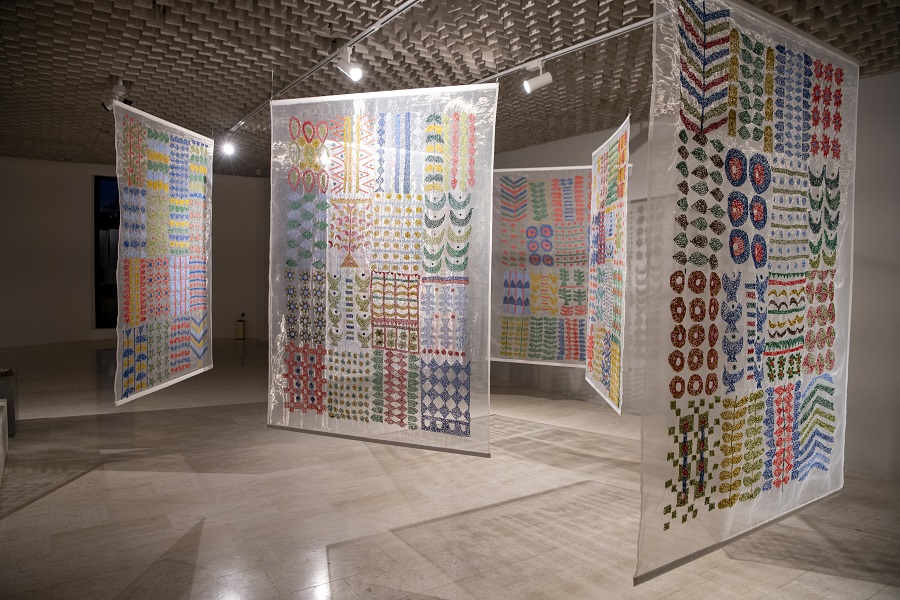
Nour Alwan’s “Sacred Spaces,” (2021). Part of the Misk Art Grant exhibition titled “Under Construction” at Misk Art Week 2021. (Omar Al-Tamimi)
Moving into the rapidly developing digital landscape is an engaging work by Saudi artist Obaid Alsafi, titled Beyond Language (2021), in which a poem by the late revered Saudi poet Muhammad Al-Thubaiti Poetry (1952-2011), titled Salutation to the Master of the Arid Land, is transformed into a video work with sound via artificial intelligence. For the work, which captivates the viewer through its colorful abstract images — some seem like palm trees while others appear to be figures — Alsafi trained the AI through data collection and machine learning to understand poetry and produce visual representations of each verse with accompanying machine-made sound.
“The first form of art in the region and the way we connected with each other was through poetry,” Alsafi, an artist who studied computer science, told Arab News. “Al-Thubaiti, one of Saudi’s pioneer poets, changed the way that poetry was written and read. Everyone sees AI as robotic, but my vision, I want to see how we can make the machine more human so that it understands language, learn and develop artwork depending on the vision of the artist. I believe artists can use AI as a tool to develop their work.”
Lastly, there is the second iteration of works created in the Masaha residency program, located in the basement of the Prince Faisal bin Fahd Arts Hall.
The program, part of Misk Art Institute’s mission to support Saudi and international practitioners across the artistic disciplines in the research and production of new works via mentorship opportunities, can be viewed on the ground floor. Titled HOME: Being and Belonging, the works by 10 visual artists from the UK, Guatemala, Morocco, India, South Korea, and from across Saudi Arabia, examine questions of how an individual and collective sense of belonging and nostalgia for one’s culture and heritage stems from one’s socio-cultural and ethnic background. The works on show explore how our sense of belonging changes and transforms with time.
The residency offers international artists the opportunity to create work on site at Masaha over a three-month cycle. Many of the participating artists are showing their work for the first time in the Kingdom — demonstrating once again Misk Art Institute’s broader aims to expand Saudi Arabia’s cultural landscape through international creative dialogue.
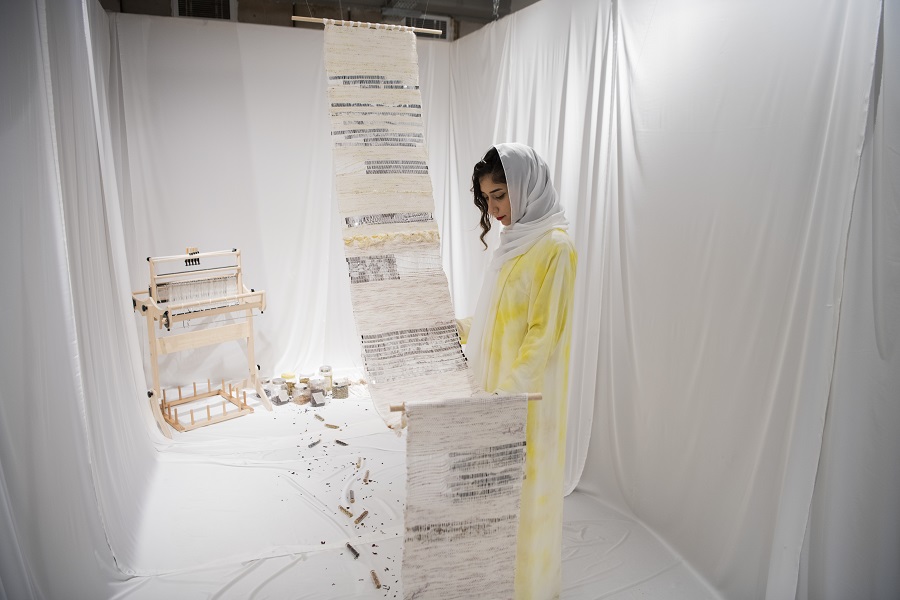
Hana Almilli’s “Through The Earth I Come Back Home” (2021). Part of the Masaha Residency showcase during Misk Art Week 2021. (Omar Al-Tamimi)



